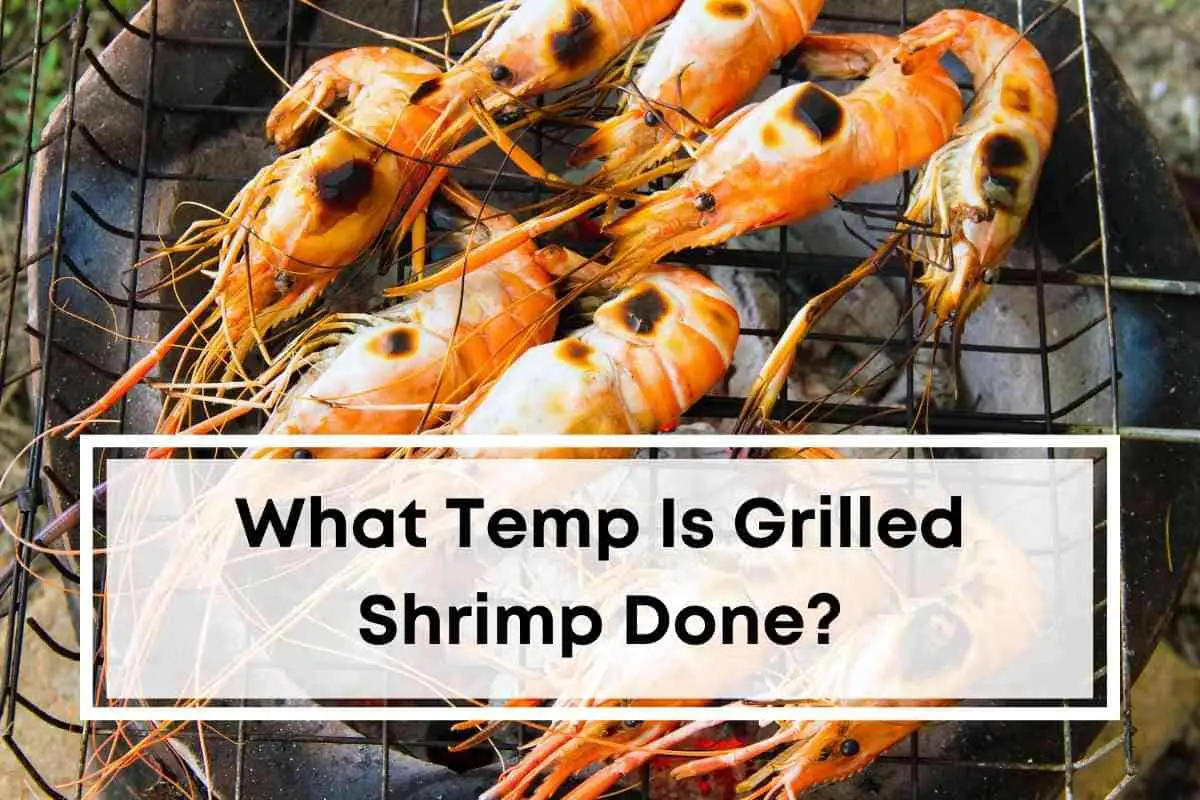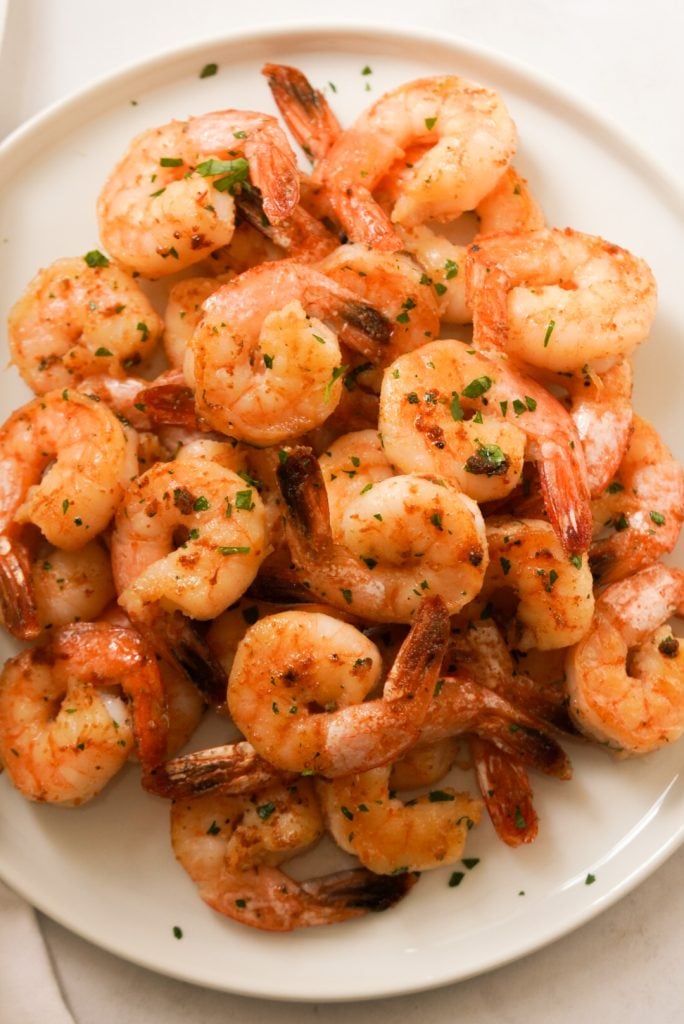Quick, easy, and tasty seafood recipe: pan seared shrimp! This dish can be made in less than 10 minutes on the stove with butter, fresh herbs, and simple seasonings. This juicy, tender shrimp is the perfect healthy protein for a busy weeknight dinner!.
Shrimp is a versatile and healthy protein that can be prepared in endless ways However, properly cooking shrimp can be tricky. Overcooking leads to rubbery, chewy shrimp while undercooking poses health risks What temperature should you cook shrimp at to achieve tender, juicy results every time? Follow this guide to learn the ideal cooking temps for boiling, grilling, sautéing and more.
Why Cooking Temperature Matters
Cooking shrimp to the proper internal temperature is critical for two reasons
-
Food Safety – Shrimp contains bacteria that can cause food poisoning. Heating it to 145°F kills potentially harmful organisms.
-
Texture – Shrimp becomes tough, dry and chewy when overcooked. Staying below the ideal temp preserves moisture and texture.
Using a food thermometer takes the guesswork out of determining doneness. It provides precise temperature control for perfectly cooked shrimp.
Checking Internal Temperature
The best way to tell if shrimp is done is by checking the internal temperature in the thickest part of the meat:
-
Insert an instant read thermometer into the side of a shrimp.
-
Wait 10-15 seconds for the temperature reading to stabilize.
-
The ideal internal temperature for shrimp is 140-145°F.
The shrimp is safely cooked once the thermometer displays a reading in this range. If under 140°F, return to heat.
How Cooking Method Affects Temperature
The cook time and temperature needed to reach the ideal internal temp varies based on the cooking method:
Boiling
-
Bring water to a rolling boil.
-
Add shrimp and cook uncovered 2-3 minutes until 140-145°F.
-
Temperature may briefly drop when shrimp is added.
Grilling
-
Preheat grill to medium-high heat, 400-450°F.
-
Grill shrimp 2-3 minutes per side until 140-145°F internally.
Sautéing
-
Heat oil in pan on medium-high until shimmering.
-
Cook shrimp 1-2 minutes per side until 140-145°F internally.
Baking
-
Preheat oven to 375°F.
-
Bake shrimp 8-10 minutes until 140-145°F internally.
-
May take longer for larger shrimp.
Monitor temperature closely with each method and technique. Adjust cooking times as needed to hit the target range.
Handy Temperature Tips
-
Thaw shrimp before cooking so it heats evenly.
-
Brining helps shrimp retain moisture when cooking.
-
Do not crowd the pan/grill which lowers cooking temperature.
-
Cut large shrimp in half so inside cooks fully.
-
Set oven rack position to middle for even baking.
-
Arrange shrimp in a single layer for best results.
What If Shrimp Overcooks?
It only takes seconds for shrimp to go from perfectly cooked to overdone. Some signs your shrimp is overcooked include:
-
Internal temperature above 150°F
-
Firm, rubbery texture
-
Dry, flaky appearance
-
Curls into a tight C-shape
Unfortunately, there is no way to reverse overcooked shrimp. Your best bet is to remove them from heat immediately once you notice signs of overcooking to prevent further moisture loss.
Is Undercooked Shrimp Safe?
Shrimp that does not reach 140°F internally can potentially contain harmful bacteria. Signs of undercooked shrimp include:
-
Translucent, jelly-like appearance
-
Below 140°F internal temperature
-
Soggy, mushy texture
To avoid health risks, it is best to fully cook shrimp until it turns opaque and reaches the target temperature range. When in doubt, use a thermometer test.
Cook Like a Pro with a Food Thermometer
Cooking shrimp perfectly to the ideal internal temperature is easy and foolproof with an accurate food thermometer. The best options for shrimp include:
-
Digital instant read thermometers for quick temps.
-
Leave-in probe thermometers to monitor temperature without opening oven.
-
Bluetooth thermometers with smartphone alerts once shrimp hits target temp.
Checking temperature is the only sure way to nail the ideal doneness for tender, juicy shrimp every time. Arm yourself with a trusty thermometer and enjoy flawlessly cooked shrimp.

Optional Variations & Dietary Adaptions
While I believe this recipe is great as it is, you can always make changes to suit your own tastes or needs. Here are some variations:
- Putting shrimp in butterfly shapes is a fun way to change things up. It gives the shrimp a unique look and helps them cook more evenly. Here are some step by step instructions!.
- Spices: Changing the spices is the best way to make this recipe a little different. The method is the most important part of this recipe; the spices and other ingredients can be used in many different ways. Onion powder, Italian seasoning, or red pepper flakes are all great things to add. You could even use a mix that’s already been made, like taco seasoning or old bay seasoning for seafood!
- Decorations I love adding lemon wedges, lemon zest, or fresh lime juice to my food. Extra melted butter on top is also a great idea.
Looking for a different method to prepare shrimp entirely? I recommend checking out my 5-Minute Air Fryer Shrimp.

Why You’ll Love This Recipe
Shrimp is one of my favorite protein options out there! It’s versatile, easy, and delicious.
It’s also a great choice when eating healthy and a pretty affordable seafood option.
I’ve definitely tried a lot of different ways to cook, but pan searing is by far my favorite! Here’s why:
- Quick Because it’s ready in less than 15 minutes, it’s great for a busy weeknight dinner.
- Healthy: Shrimp is a great source of protein and is full of omega-3 fatty acids and other good things for you. It is also very low calorie and low fat.
- To Offer
- Golden Brown: The outside also gets nice and crispy and golden brown. Which I love! You’ll also get some of those tasty bits that have browned on the bottom of the pan. If you know, you know.
- This simple shrimp recipe can be seasoned and enjoyed in a huge number of different ways. Read the full post below for all of my suggestions and changes.

How to Make Perfectly Cooked Shrimp Every Time
What temperature should shrimp be cooked at?
Shrimp is a popular and versatile seafood that can be boiled, grilled, fried, or sautéed. When it comes to cooking shrimp, it’s important to know the right temperature to ensure that it is safe to eat and delicious. The recommended internal temperature for cooked shrimp is 145°F (63°C).
Is shrimp healthy to eat?
Shrimp is very healthy to eat, unless you have an allergy to shellfish. Shrimp is great because it is a low calorie, high protein food that is relatively inexpensive. Shrimp is also very versatile, so there are many recipes out there, meaning that you can eat shrimp multiple times a week each time in a different way. Don’t make shrimp your only protein source, because a healthy diet is also a varied diet.
What temperature do you cook shrimp in a crock pot?
Cook to 140-145°F (60-62°C). The high heat sears the surface while cooking the interior perfectly. Sautéing or stir frying: Ideal for medium to large shrimp. Cook to 140-145°F (60-62°C). The constant motion distributes heat evenly. Steaming: Works well for medium or small shrimp. Cook to 140-142°F (60-61°C).
Is it safe to eat shrimp at 145 degrees?
If the reading is 145°F, the shrimp is safe to eat. (If you prefer it less done, you can remove below that level although there is some risk that not all bacteria will have been killed.) If the shrimp is below 145°F, let them sit in the pot to continue cooking for a few more minutes.
